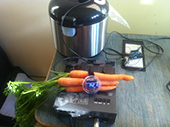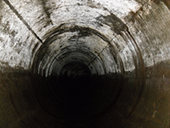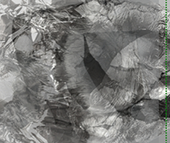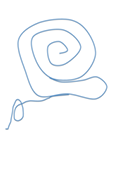Editorial
Would JAR consider a submission that engages with the precarious material status of objects? What about research carried out during a residency in Mozambique? What about in Tokyo? Or during a trip across Australia? Might we be interested in live-performance sampling? What about the staging of scientific texts? Would we exclude architecture research? Literature? Graphic design? Can a text be poetic, interactive, multilayered, or even missing? Can documentation be problematised? May a submission travel from art to philosophy and back? Can I submit my artistic research even if I don’t consider myself to be an artist? What about folk music?
JAR has been increasingly successful in engaging the most diverse communities of researchers, who – despite our status as an academic publication – are often activists at the fringes of or outside academia. Our communications with these researchers reveal that, while definitions of ‘research’ remain a concern, the adjective ‘artistic’ in our title perhaps introduces more unnecessary complications than we may initially have anticipated. What precisely do we mean by ‘artistic’ and why did we not, say, choose ‘art’ as a qualifier or, alternatively, avoid the A-word by opting for something more ‘creative’?
While no decision is perfect, and many are the result of rather arbitrary meanderings, as far as JAR is concerned it is important to stress that we did not want to follow the popular constructs of ‘practice-based’ or ‘practice-led’ research, since they suggest some form of practice–theory divide in which research may be associated with the latter. Second, by having chosen ‘artistic’ over, say, ‘creative’, we wanted to allude to post-conceptual aspects of contemporary practice in which social or material aspects are emergent and not simply given. Third, we wanted to avoid reference to specific disciplines, since most practitioners outside fine art – say in music, architecture, or design – will find something ‘artistic’ in what they do. Still, it may not be the way in which such practitioners think of themselves.
In a conversation with Gina Badger1, Alise Upitis problematises the adjective ‘artistic’ in the context of research with reference to a text by Ann Bermingham. In that text, Bermingham discusses the fact that in the mid eighteenth century the term ‘artistic female’ implied a problematic objectification and belittling of women, since, as Bermingham states, ‘“Artistic types” are works of art themselves, embodying art without necessarily mastering it.’2 However, like Deleuze and Guattari demonstrate in the case of Kafka3, what has been minorised may be affirmed so as to offset the hegemony of the major.
‘Artistic’ understood through this lens directs attention away from the results of singular human activity and its outcomes towards quasi-autonomous creative and epistemic processes. With this comes the challenge – alluded to in that conversation by Badger – of defining what may or may not count as ‘artistic research’ if such research need not be done by those labelled ‘artists’. Having opted for ‘artistic’, JAR suggests that research may be one activity through which the forms of art in an expanded field may be redefined and conventional discriminations challenged.
In Intersections of creative praxis and urban exploration, David Prescott-Steed reports on his walking practice through which he investigates storm-water drains in Melbourne. This mostly dark environment is well suited to underline the acousmatic aspect of this practice – that is, an engagement with sound when it is not related back to its origin.
With Shuttling, Beth Weinstein, Mick Douglas, and James Oliver challenge practice with a very different environment, that of the desert. The notion of ‘shuttling’ stands for possible research methodologies that encompass situated, dynamic, and open modes of interaction.
Karen Savage suggests in The slippery trail: The mollusc as a metaphor for creative practice that research can be seen as a living and embodied process, where the metaphor of the mollusc may help us see the need for housing together with the need for movement.
In A taste of big data on the global dinner table, Markéta Dolejšová reports on her project ‘HotCarot & OpenSauce’ that engages with contemporary activist food art and design. It aims to engage consumers with food production in the information age.
In her contribution, Sticky currents: Drawing folds in serial exhaustion, Nicole De Brabandere extends the affective dynamics of folding to the exposition itself. In the activity of folding, of drawing in and drawing out, what feels fixed (striated) and processual (smooth) emerges in the material, haptic intensities of surfaces.
Michael Schwab
Editor-in-Chief
- 1Gina Badger and Alise Upitis, ‘On the Research Paradigm in Contemporary Art Discourse: A Dialogue’, in Intellectual Birdhouse: Artistic Practice as Research, ed. by Florian Dombois, Claudia Mareis, Ute Meta Bauer, and Michael Schwab (London: Koenig Books, 2012), pp. 257–69.
- 2Ann Bermingham, ‘The Aesthetics of Ignorance: The Accomplished Woman in the Culture of Connoisseurship’, Oxford Art Journal, 16.2 (1993), 3–20 (p. 7).
- 3Gilles Deleuze and Félix Guattari, Kafka: Toward a Minor Literature, trans. by Dana Polan (Minneapolis: University of Minnesota Press, 1986).





